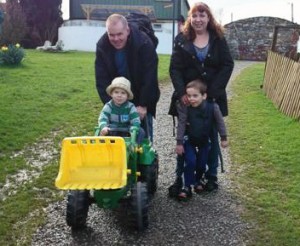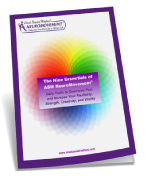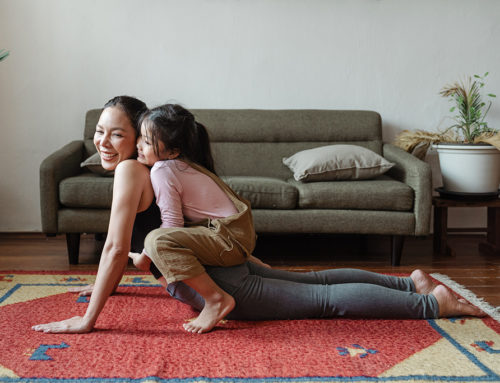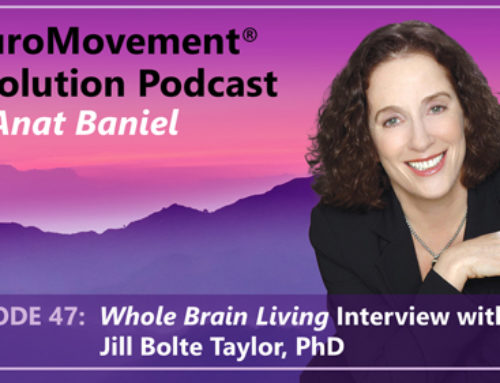New Harness for Disabled Children
A Discussion with Anat Baniel

Recently, there was an article posted about an Israeli mom who invented a new kind of harness to help disabled children walk.
Click here to read the complete article: Mom Invents Harness to Help Disabled Kids Walk.
There was much discussion on the ABM Parents & Caregivers Facebook Group about this new device.
The following question was asked:
What do you think about this harness from the Anat Baniel Method (ABM) viewpoint?
Following was my response:
As harnesses go, this one looks quite wonderful. The way I see it is that the mom or dad and their son Rotem become one body, one brain. Of course, I would then want to use this harness in a way where I look for the boy’s brain to be the initiator of the movement, rather than the adult, and the adult responds to the boy’s intent.
And over time, the adult does less and less, and the child does more and more. Otherwise, we are risking anchoring even more deeply the child’s experience of movement as something being done to him and thus not having the inclination to learn how to initiate and organize movement on his own.
In addition, I would love to see this child getting lots of ABM lessons to wake up his brain, and map the different parts of his body to his brain, in conjunction with the use of this harness. This is the first time that I have seen any kind of harness for kids with cerebral palsy that I would associate with love and connection.
My response seemed to generate even more questions, especially from parents who have children who are using ABM NeuroMovement®.
Following are a couple of specific questions that came up:
- We’ve been so careful to try to keep our child out of positions he can’t get into on his own. Why is this harness okay?
- Would you elaborate a bit on why you feel this harness is acceptable but a walker and stander are not?
These are really important and valid questions, so I wanted to follow up and share a few more thoughts with you.
The principles of Anat Baniel Method® NeuroMovement®, my thinking, and how the brain works have not changed. If you read my initial response above, I respond to the harness as a mechanism for dynamic interaction between the parent and the child for limited amounts of time.
This harness gives the parent an option to provide the child with an opportunity for the child to initiate movement and form the intention to move. For this to happen, the parent needs to be sufficiently sensitive (Subtlety Essential) to be able to pick up on the most subtle cues from the child—not an easy task. The parent will need to go slowly enough (Slow Essential) and gently enough to be able to notice the child’s responses and initiation of action if any occur, rather than override the child and have her be moved only passively.
Parents can also introduce some movement variations while the child is in the harness (Variation Essential). The parent needs to move in ways that lead the child to pay attention to what he feels (Movement with Attention Essential). All the other Essentials, such as Enthusiasm, Flexible Goals, etc. can also be utilized while the child is in the harness. By doing it this way, the harness becomes a mechanism to help the brain begin creating new connections to hopefully form more intentional movement.
This harness does not replace giving ABM NeuroMovement lessons to the child in order to help the child’s brain figure out how to organize movement and intention better. It is perhaps the equivalent of having the child sitting in a parent’s lap while the parent does gentle, slow, dancing movements with her, or something similar.
Don’t get bogged down by the fact that it is called a harness. Think of it as a global hug for very short periods of time. 🙂
In response to the question why this harness is acceptable and walkers and standers are not, the answer is:
If we can integrate any assistive device in a dynamic, functional, and limited way, (in the way that I described above), then there is nothing wrong with using the device. When the device is used in a static way in an attempt to “fix” the child, impose a position on them, and take away the opportunity for variation, experimentation, and actual real growth in the brain and learning how to master the movement, then it is a deterrent.
At the same time if the child is really not able to stand up, then a wheelchair is a great solution. I still recommend introducing Movement with Attention and the other Essentials while the child, or adult, is sitting in the wheelchair.
One Final Note: I suggest that you all read Kids Beyond Limits again. I think it deserves reading way more than one time because the concepts are deceptively simple. To really understand and execute and apply them across the board actually takes a lot of thinking, experience, and for many people, the training program.
I hope this information is helpful to all of you. Thank you for your concern, for wanting to understand, and for asking me to clarify. I welcome your comments and feedback.





